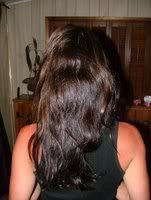If not, it's the enlarged quote that stands out on an article's page to amplify a certain point or tie in a design with the copy, etc...
A friend of mine who works for a New York-based magazine—the name of which I soo can't mention—called me to tell me that their current issue had just returned from the printers and there was a major—how do I say it?—a major fuck up in it. Here it is:

In case you can't read it:
"THIS IS A PULL QUOTE THAT IS WILL TIE THIS PAGE IN WITH THE COVER PAGE YUP THIS IS A PULL QUOTE THAT IS WILL TIE THIS PAGE IN WITH THE COVER."
Evidently the previous designer put it in as a subtle reminder to herself to fill the spot. No need to worry about proper grammar or idiotic tendencies if you plan on removing it later, right? Oops. Three proofreaders and a new designer later, this is how it went to print. The owners of the magazine still haven't noticed it and it has been a week. I assume that's why my friend still has his job.
As an aside, the funniest thing about the whole thing is that when I saw it, I thought it was absolutely brilliant. This is something I would've done intentionally in my magazine, may it Rest In Peace. You know—just for shits and giggles. I'm just pissed that I didn't think about it before we folded (or come to think of it, maybe editorial decisions such as this are why we folded)! Damn hindsight - it's always 20/20.
Magazines





2 comments:
I do the same thing on webpages that I haven't put all the content into yet.
"This is a pull-quote tagged whatever, it should have a catchy saying for good looks and shite of that sort."
Customers and bosses always look at you like your psyco for "talking" to yourself in your work. It's good to know we're not alone!
Surely one snarky customer will call in and report the subtle error. I hope your pal keeps his job.
Post a Comment